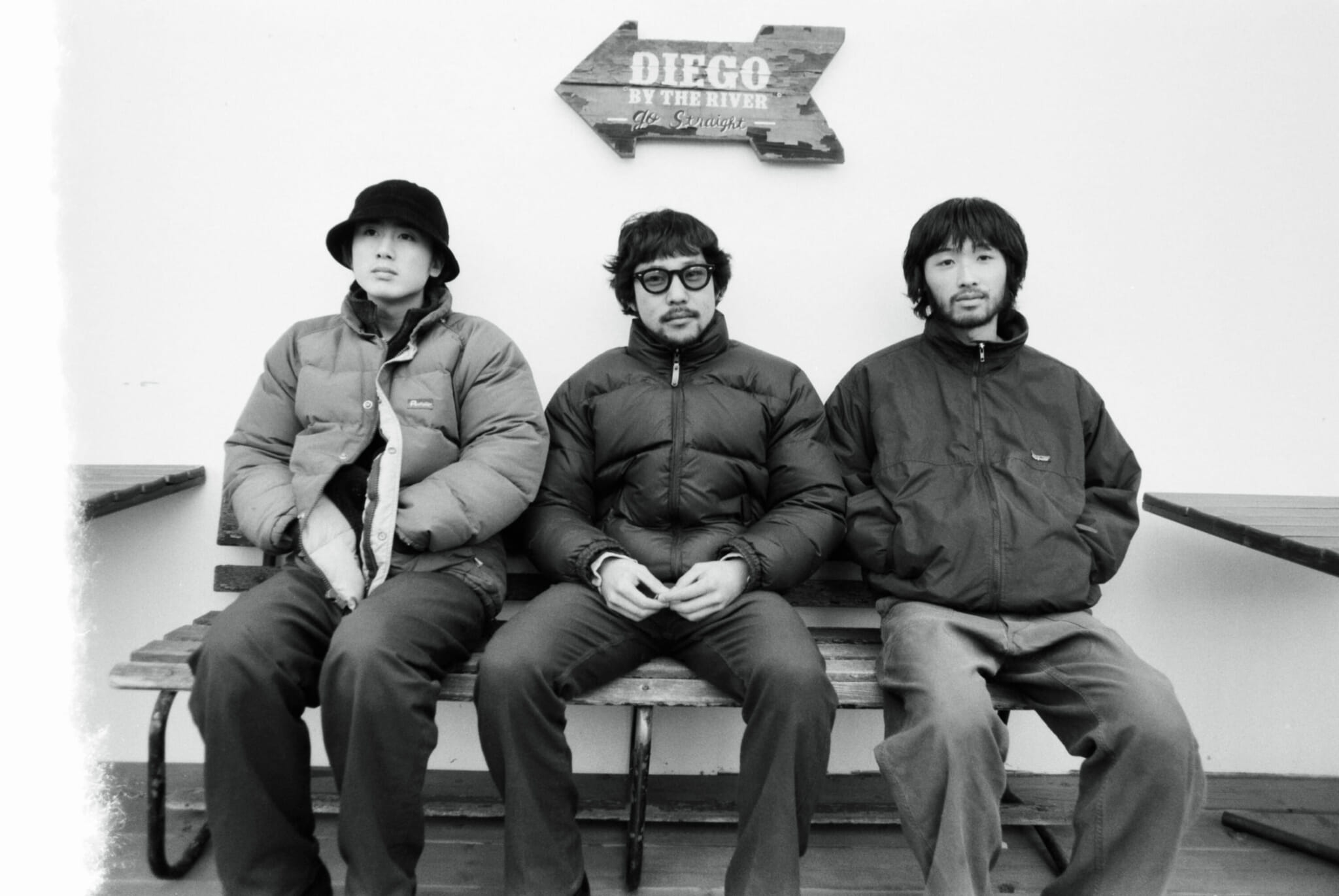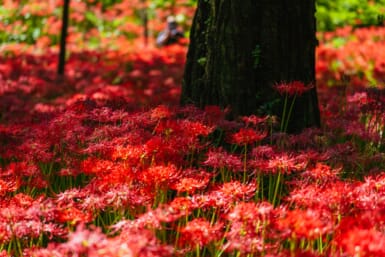Maya Ongaku has been rapidly rising in the Tokyo scene since forming in late 2020. Although relatively new to the gigging scene, the band already counts some of Japan’s biggest milestones under its belt: a radio appearance opposite Haruomi Hosono of Yellow Magic Orchestra fame, a spot at Fuji Rock and a debut album on the independent music label Guruguru Brain. Incredibly, these achievements have all come in the past year — and it’s easy to see why.
The trio, which counts the Beatles, seminal krautrock band Can and John Lurie as influences, creates the sort of music that’s impossible not to like. Their musical output consists of meandering basslines and washy guitar with just the right amount of woodwind and ambiance to take their tunes up a level in terms of sophistication while keeping them out of chin-stroking realms. They opened for Kikagaku Moyo’s final show, effectively taking up the torch from the beloved quintet that counts among its members the label bosses of Guruguru Brain.
Just like Kikagaku Moyo, Maya Ongaku has slack chords and a psychedelic label, yet they bring with them a refreshingly deep ambient sensibility previously referred to as “new generation ambient-folk.” The lack of a formal percussionist leads songs to meander for days, gently washing along, transporting listeners to the nearest beach. With a European tour in the works and a headline show at Shibuya’s WWW coming up, the band is set to continue its upward trajectory.
They shared their biggest influences alongside the albums they’re digging right now.
Influential Albums
Like any band, the members of Maya Ongaku grew up listening to a range of music, much of which has influenced the band’s current sound. They share the albums which proved important to their career.
The Legendary Marvin Pontiac – Greatest Hits
John Lurie plays avant-garde blues as a fictional bluesman Marvin Pontiac who has been revealed over time. He lets loose with verses that mock the listener and sound like they were made by a crazy music obsessive. Even voodoo gods, who don’t fall for fakery, would gather around and dance to the sounds of Marvin Pontiac.
Can – Ege Bamyasi
Fourth studio album by experimental music ensemble Can. A perfect blend of experimental and pop, this is one of their closest approaches to pop music. It is zombie-like, with melodies that gradually build up and die over minimal beats. This is the kind of music we want to make one day.
Pink Floyd – Meddle
The first studio album by Pink Floyd to be made solely by four members, especially the epic ‘Echoes’, which covers the entire B-side. It’s been inside our heads since we first had it on blast in the pitch-black darkness of our student house.
The Beatles – Beatles (White Album)
This self-titled album is full of ideas and incredible creativity, just about keeping to the ‘band’ format. The songs embody the chaos of the band at the time, and cover genres from contemporary to reggae. The potential that a band can reach is obvious here.
Kikagaku Moyo – Masana Temples
The fourth album by our label bosses, Kikagaku Moyo. With minimal krautrock beats and dreamy jam session vibes cultivated through an intense tour life, the work provides an alien’s-eye view of Japan’s psychedelia. I think we have to continue this legacy, following Kikagaku Moyo’s love of freedom, travel and music.
Albums for Your Playlist
Maya Ongaku shared the albums they’ve had on repeat.
John Carroll Kirby – Septet
The sixth studio album from American keyboardist John Carroll Kirby. His kinetic way of fluidly crossing between jazz, minimal ambient and experimental has greatly influenced us, and we are looking forward to his future output and collaborations.
Asa Tone – Temporary Music
Out on American label Leaving Records, this is the first album from the Jakarta- and New York-based trio, made in a temporary studio in the Indonesian jungle. A masterpiece of electronica, it sees minimal percussion rhythms overlaid with tribal scales to create an experience that leads you to an unreal world.
Ricardo Dias Gomes – Muito Sol
The third album by the talented Ricardo Dias Gomes from Rio de Janeiro. He retains the essence of bossa nova and vocal performance while incorporating a 21st-century approach to sound, using layers of drone and experimenting to create his unique vision. Muito Sol embodies the coolest values of contemporary Brazilian music.
The Sweet Enoughs – Marshmallow
Exotica from Hiatus Kaiyote’s keyboardist, Paul Bender. The sound of vintage white noise is paired with old-school rhythm machines, inviting you to tropical southern lands. If you listen to this on loop in your room, it feels like the sunlight and breeze drifting in through the window come in with spirits.
Maya Ongaku’s debut album, Approach to Anima, is out now.









